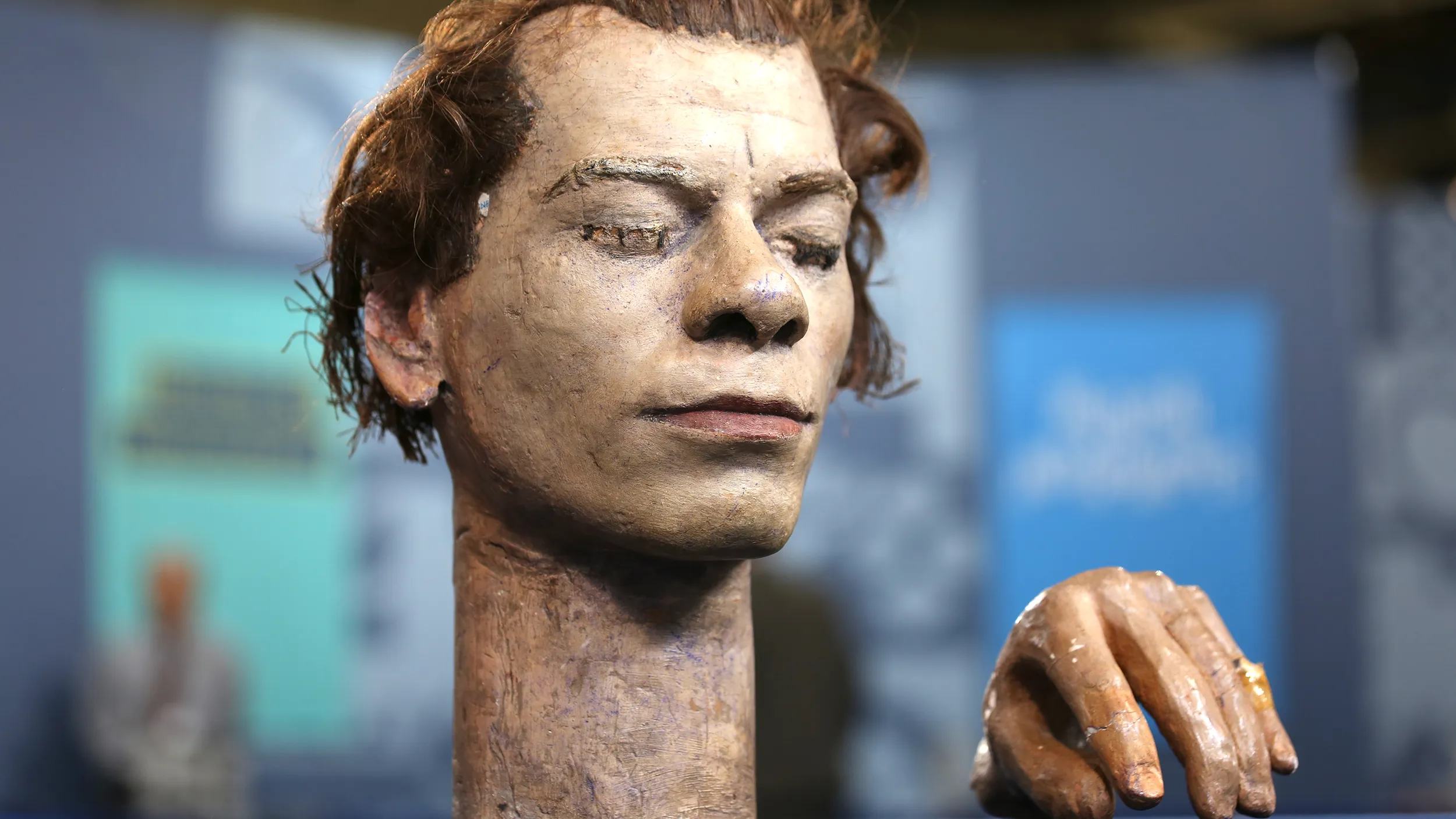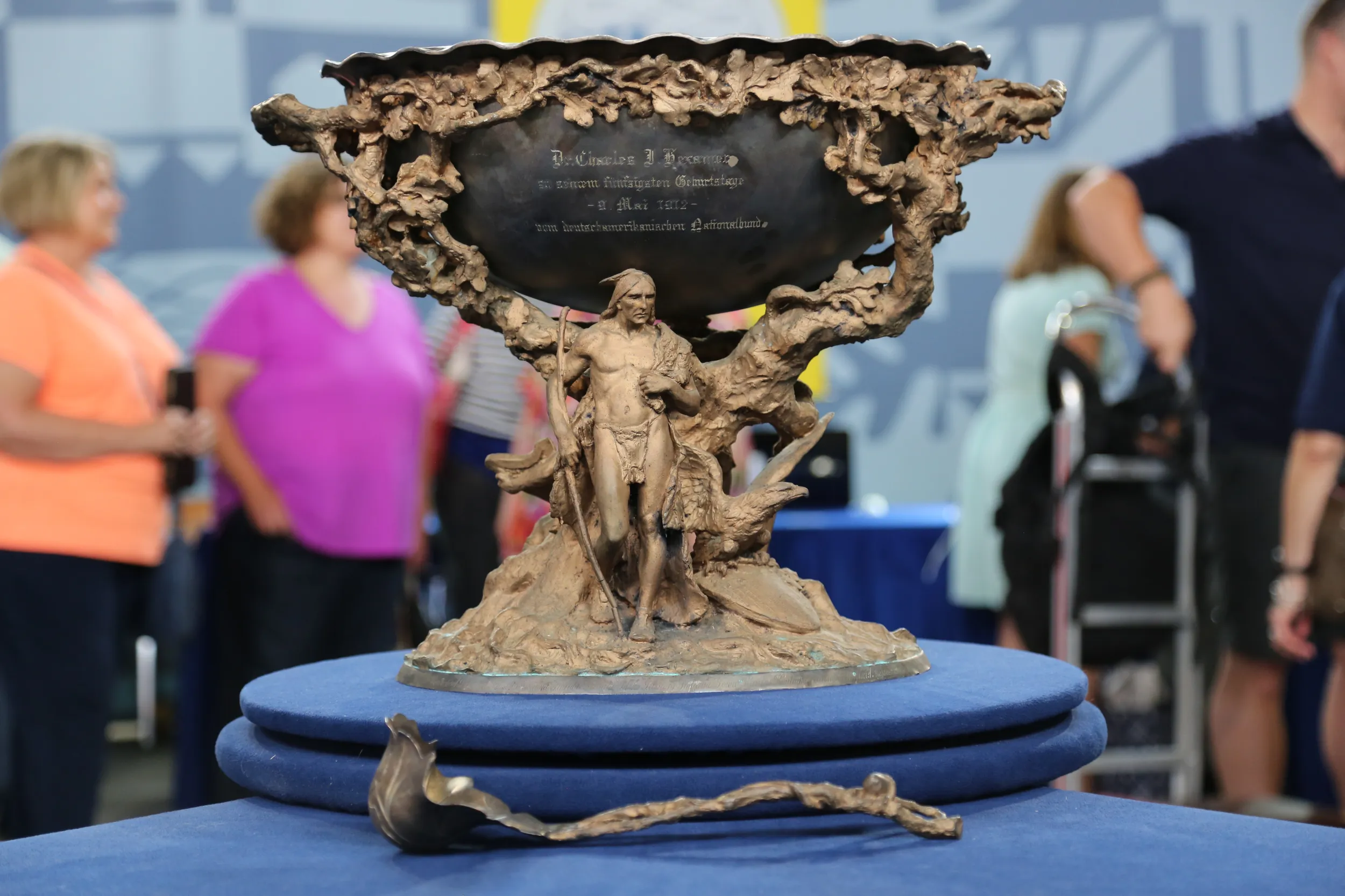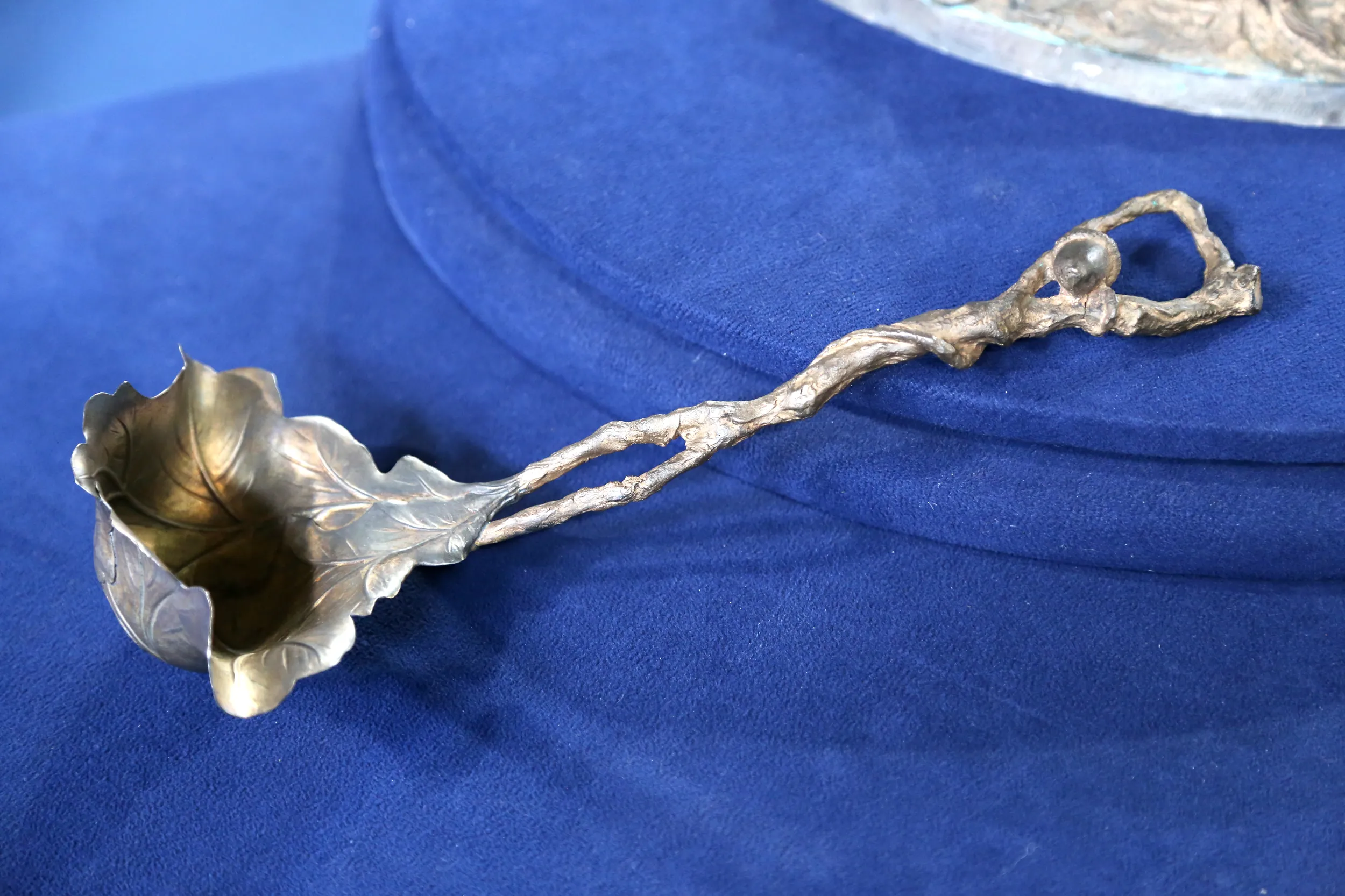GUEST: I inherited it from my late father-in-law, who acquired it at an auction, probably 30 years ago. All I know is I remember him telling me that it was buried. And I've been trying to do research on it for years, and because of the inscription being in German, I can't figure out what it is.
APPRAISER: First of all, I don't read German, but we have some of our colleagues here who do. And I pestered a few of them to try to figure out what it says. And it's a birthday present.
GUEST: Okay.
APPRAISER: It was given to Charles Hexamer as a gift for his 50th birthday by the National German-American Alliance. He was president of that alliance, and founded it in 1901 in Philadelphia. And he was president when this was given to him in 1912. The Alliance, their mission was to promote German heritage within American culture, and they were a big proponent in promoting the Germans as some of the earliest American settlers and being part of the true American culture. They were big proponents against the restriction of immigration, and they were also big proponents against Prohibition.
GUEST: Hmm.
APPRAISER: And it's interesting that this was a punch bowl, because what would you serve in punch but an alcoholic beverage, perhaps? The artist is Hans Schuler, and he was a German-American artist, a German immigrant, he immigrated to Baltimore. He was known as the Baltimore monument-maker, because he made so many monuments for public display. And not just Baltimore, but Washington, D.C., and up and down the East Coast. It's signed with Schuler's name and the date, 1912. It additionally has the Roman Bronze Works mark on the back of it. It shows it was cast at the Roman Bronze foundry. It was made in collaboration with the very famous Baltimore silversmith named Samuel Kirk. The bottom of the bowl is marked "Sam Kirk" as well as the ladle. The handle is bronze, so the bronze part was made by the artist...
GUEST: Hans Schuler, okay.
APPRAISER: And the silver part made by Samuel Kirk, the silversmith. Did you notice all of the words around here?
GUEST: I did.
APPRAISER: Do you know what that says?
GUEST: No, I don't.
APPRAISER: It is the 45 states and the District of Columbia that were members of the German-American Alliance at the time that this was given to him.
GUEST: Ok.
APPRAISER: So they contributed to this gift, and so all of the states' names are on there.
GUEST: Hmm.
APPRAISER: The buried thing, I don't know whether that's true or not, but it kind of does make a little bit of sense, because the German Alliance disbanded after America entered the First World War. And, of course, all things German were very unpopular at that time.
GUEST: Ok.
APPRAISER: So you know, it's plausible that it was buried, that maybe it wasn't a proud thing to have it. They were trying to protect it from being destroyed, perhaps. It's very clearly marked, and it's nice that it was a collaboration between a German-American artist and an American firm.
GUEST: Yes.
APPRAISER: The artist didn't do a lot of things that have come up for auction or for sale on the secondary market, because most of his things are in public forums. But there are some records, and when they do come up they do quite well. So we think that if this were to come to public auction, in the condition that it's in, it would bring around $20,000 to $25,000.
GUEST: Awesome! That's great. It's so good to hear some information about it because I hadn't a clue.
APPRAISER: You could probably clean it up, take it to someone who would restore the patina. It would cost a couple thousand dollars to do that, but you might add as much as $5,000 or $10,000 to the value.
GUEST: And that was one thing I didn't know, if I should clean it or not clean it, so it had not been cleaned.
APPRAISER: You shouldn't do it yourself, but you should probably have a professional do it, and they really need to replace the patina, because the patina is gone from it.
GUEST: Okay.










